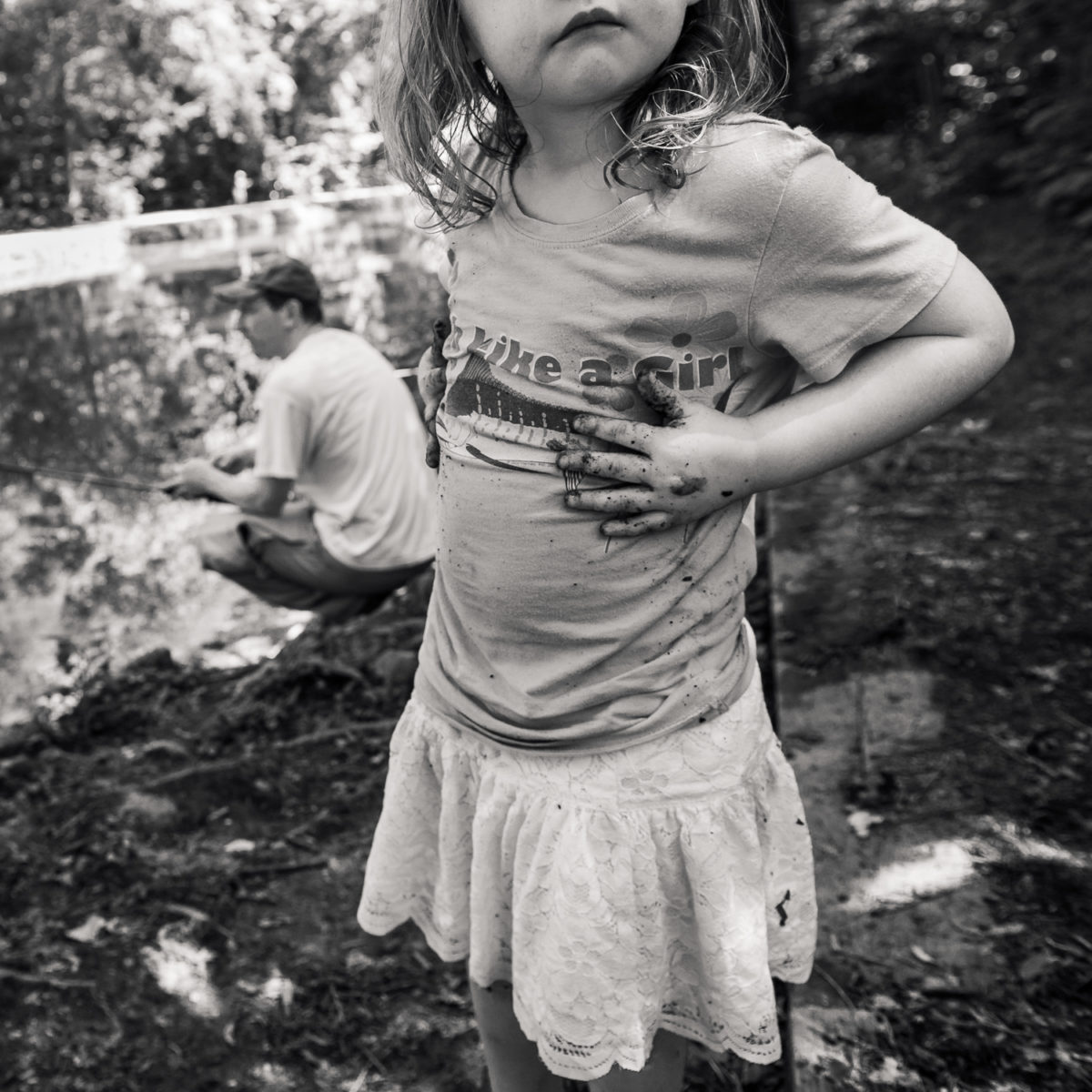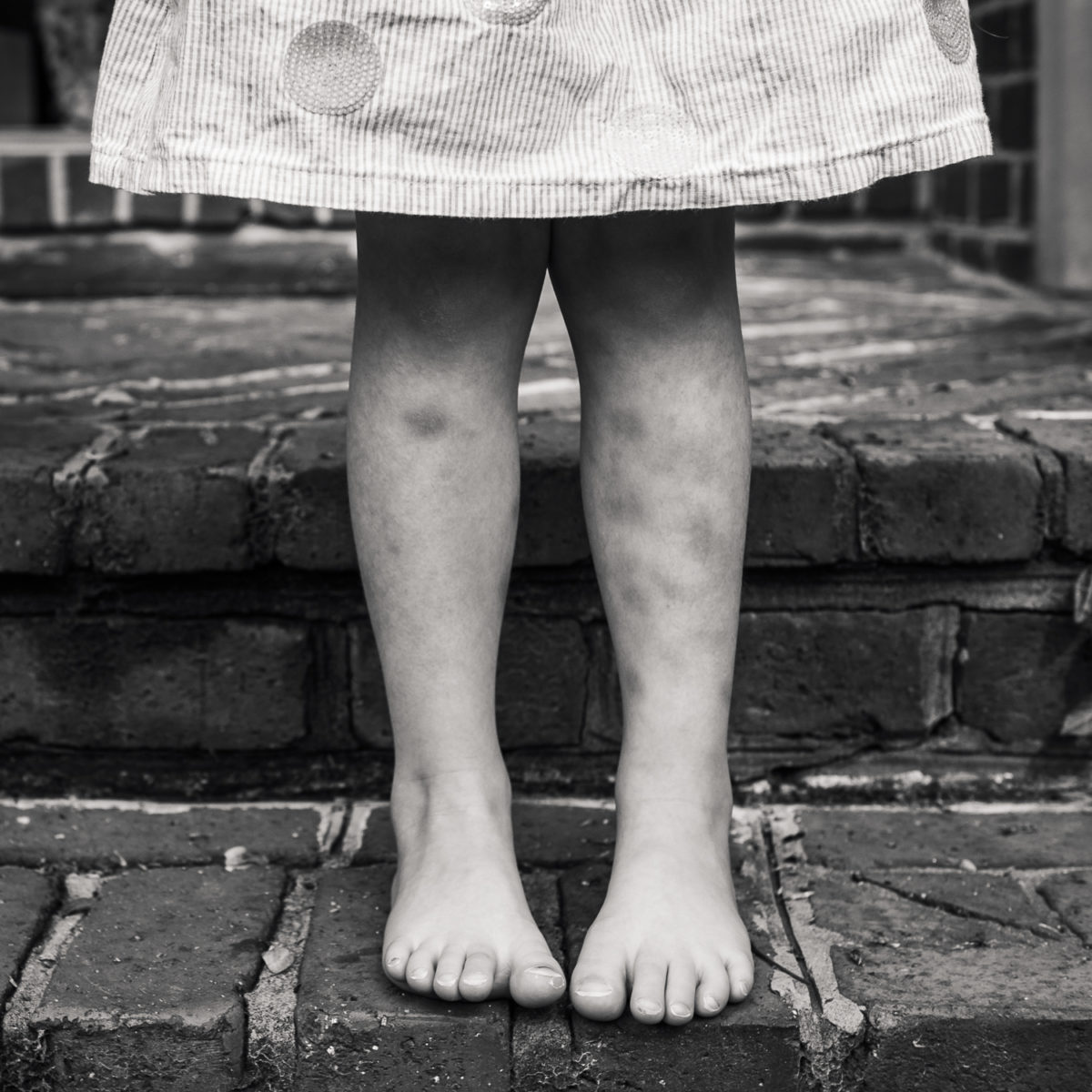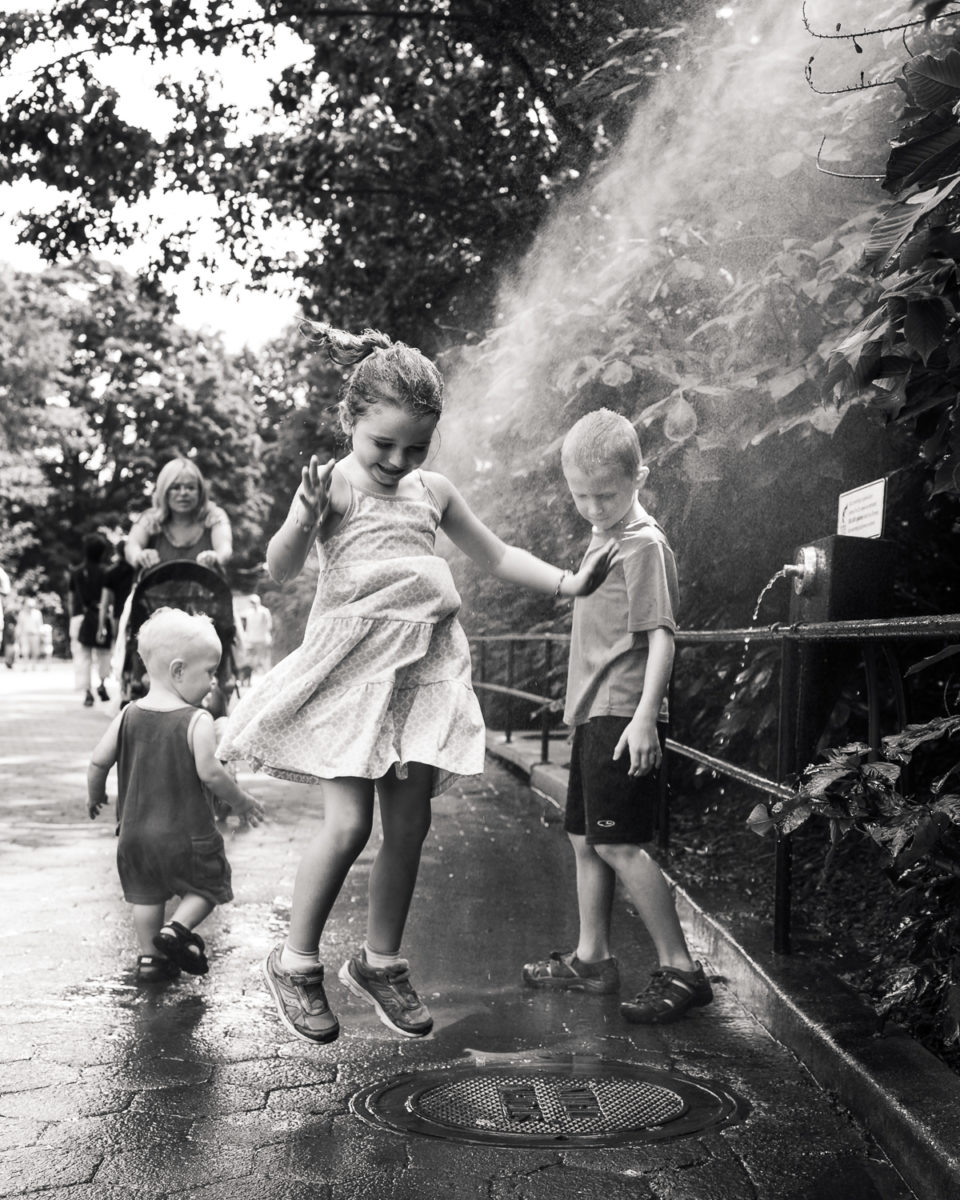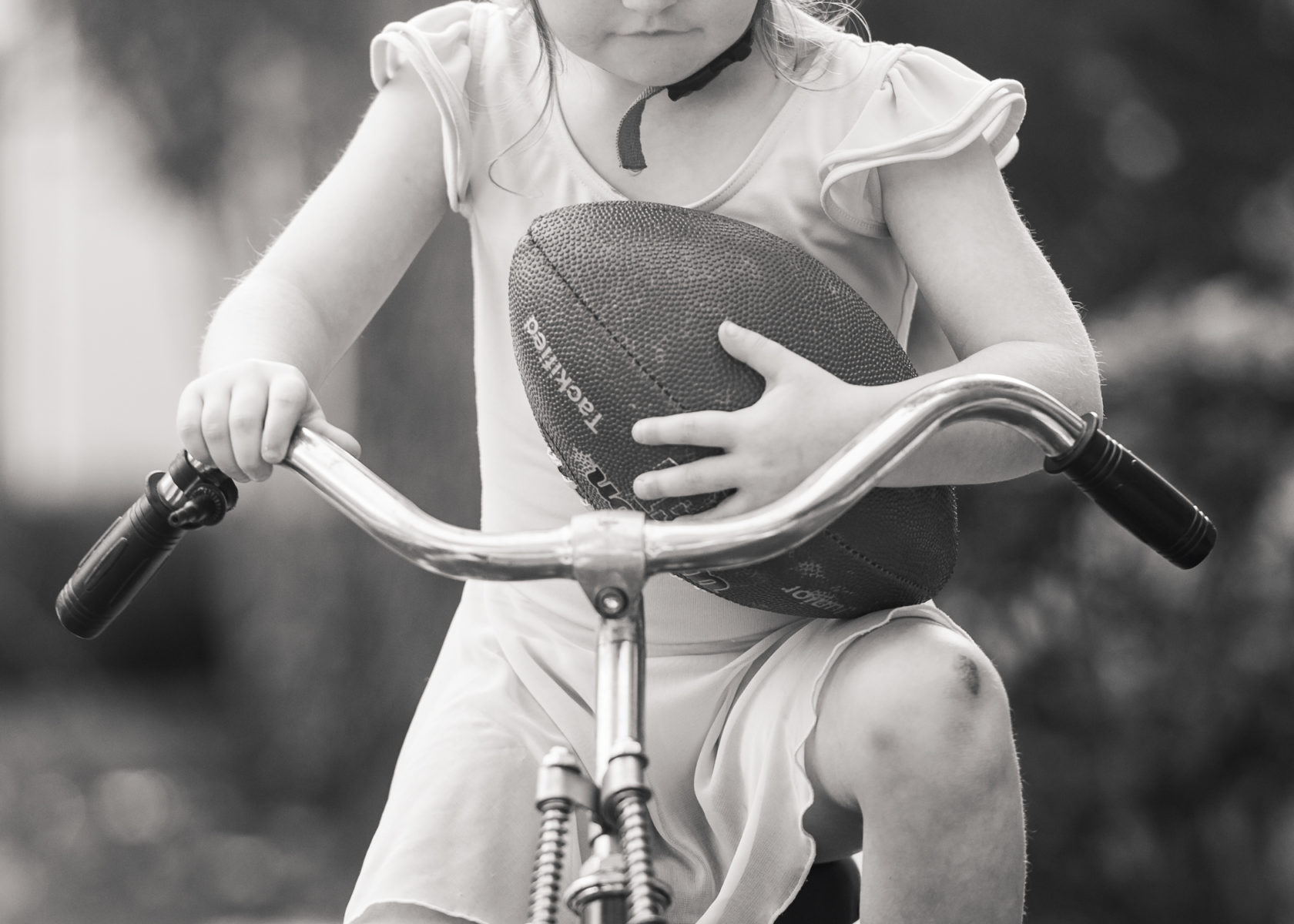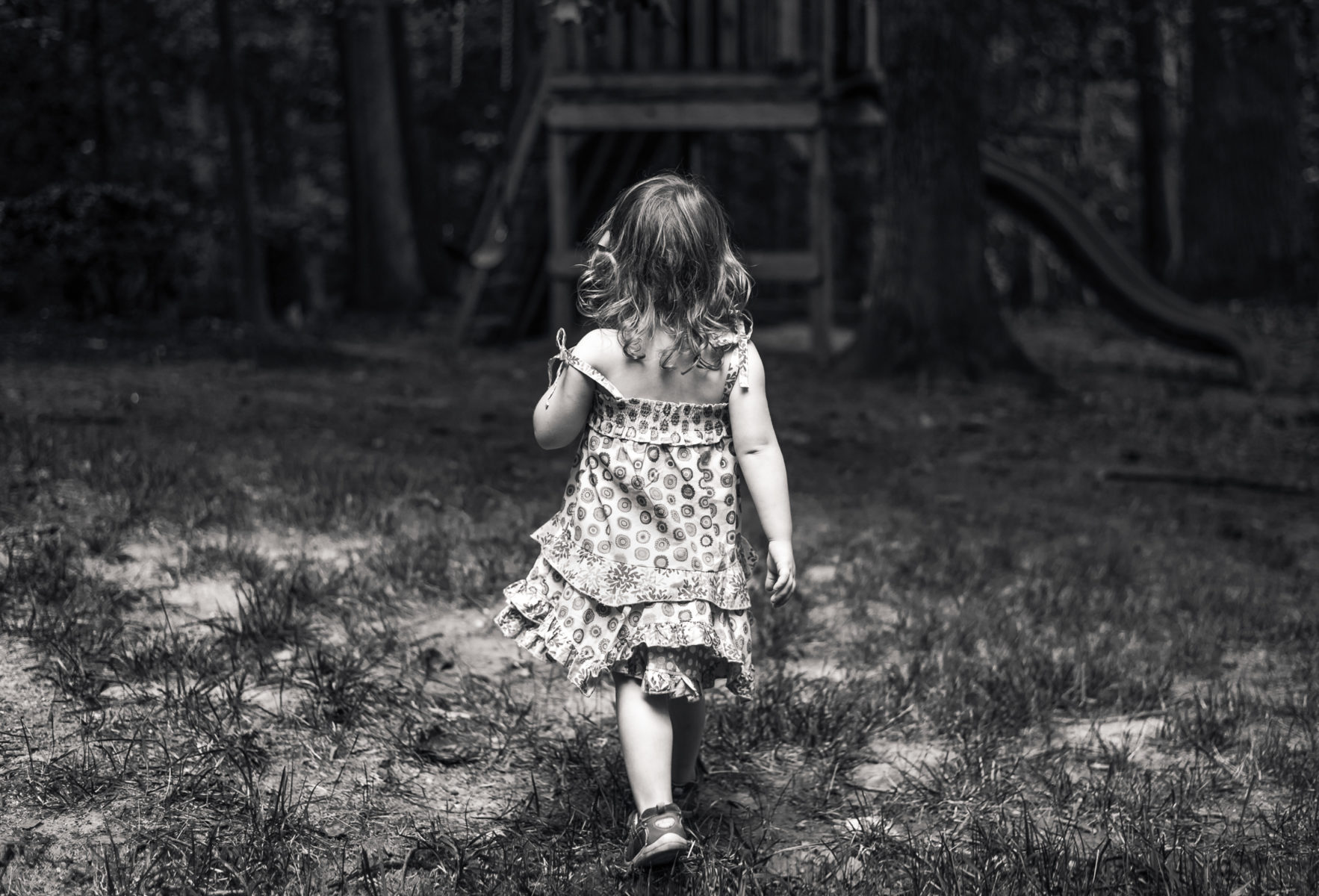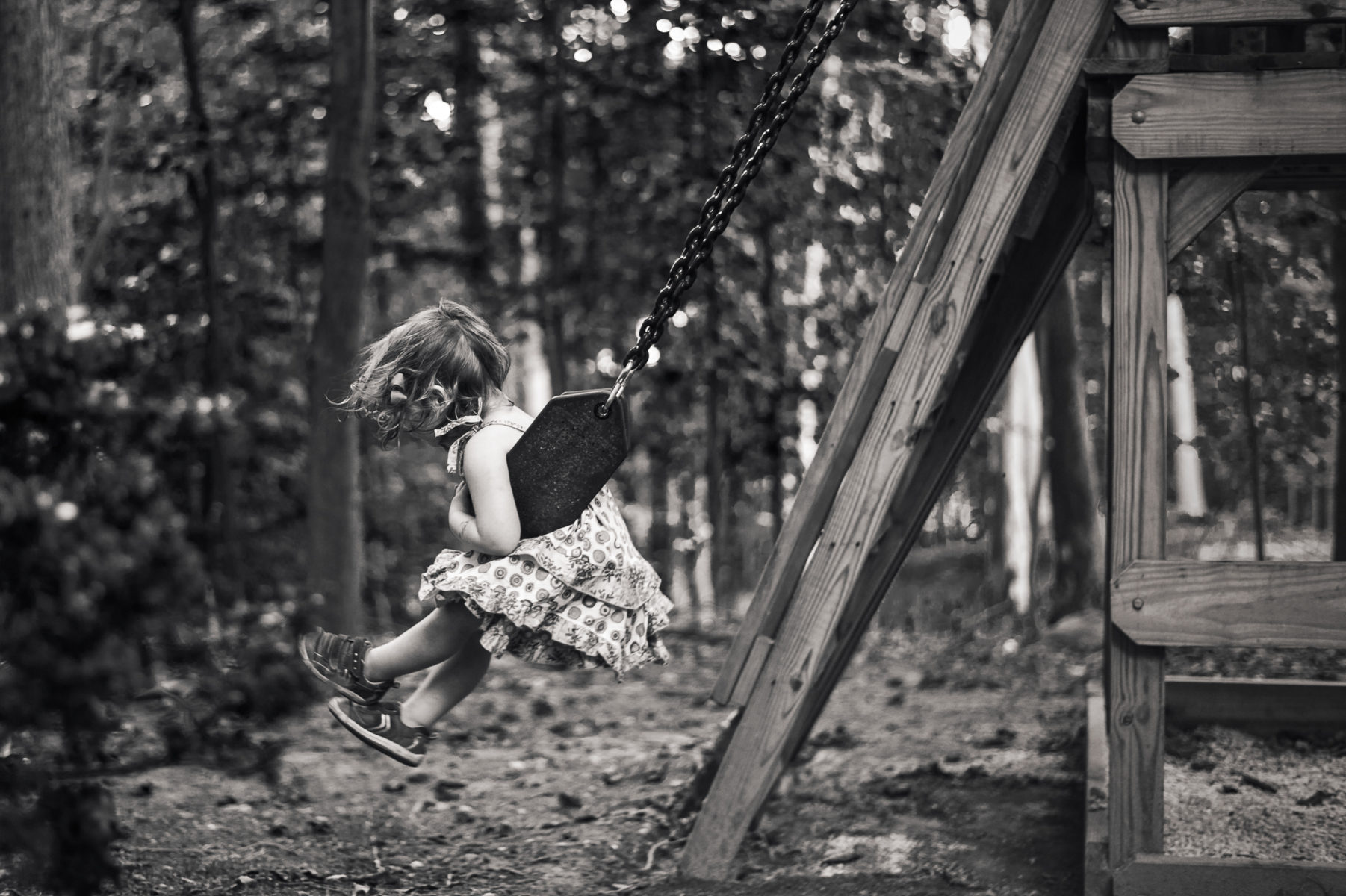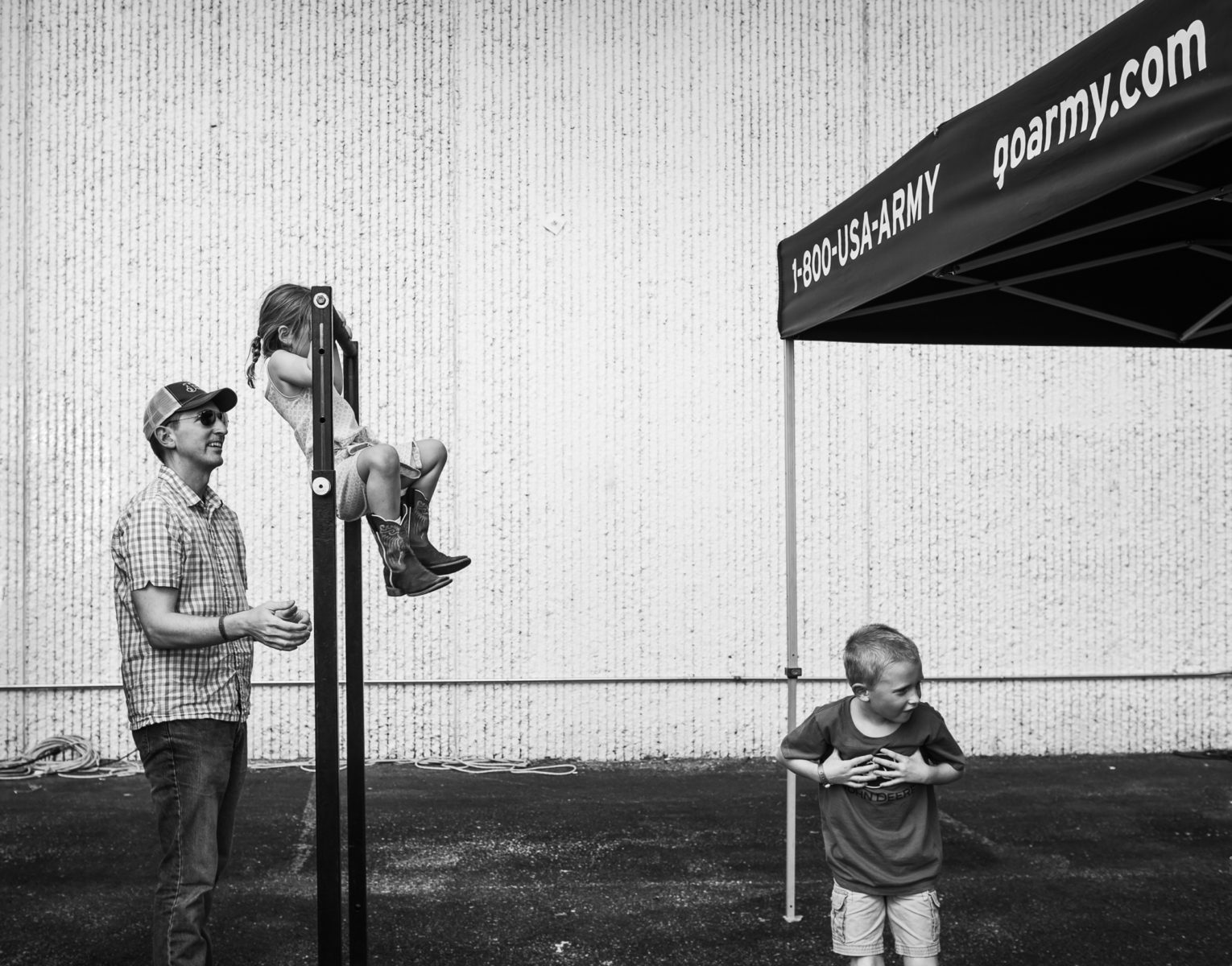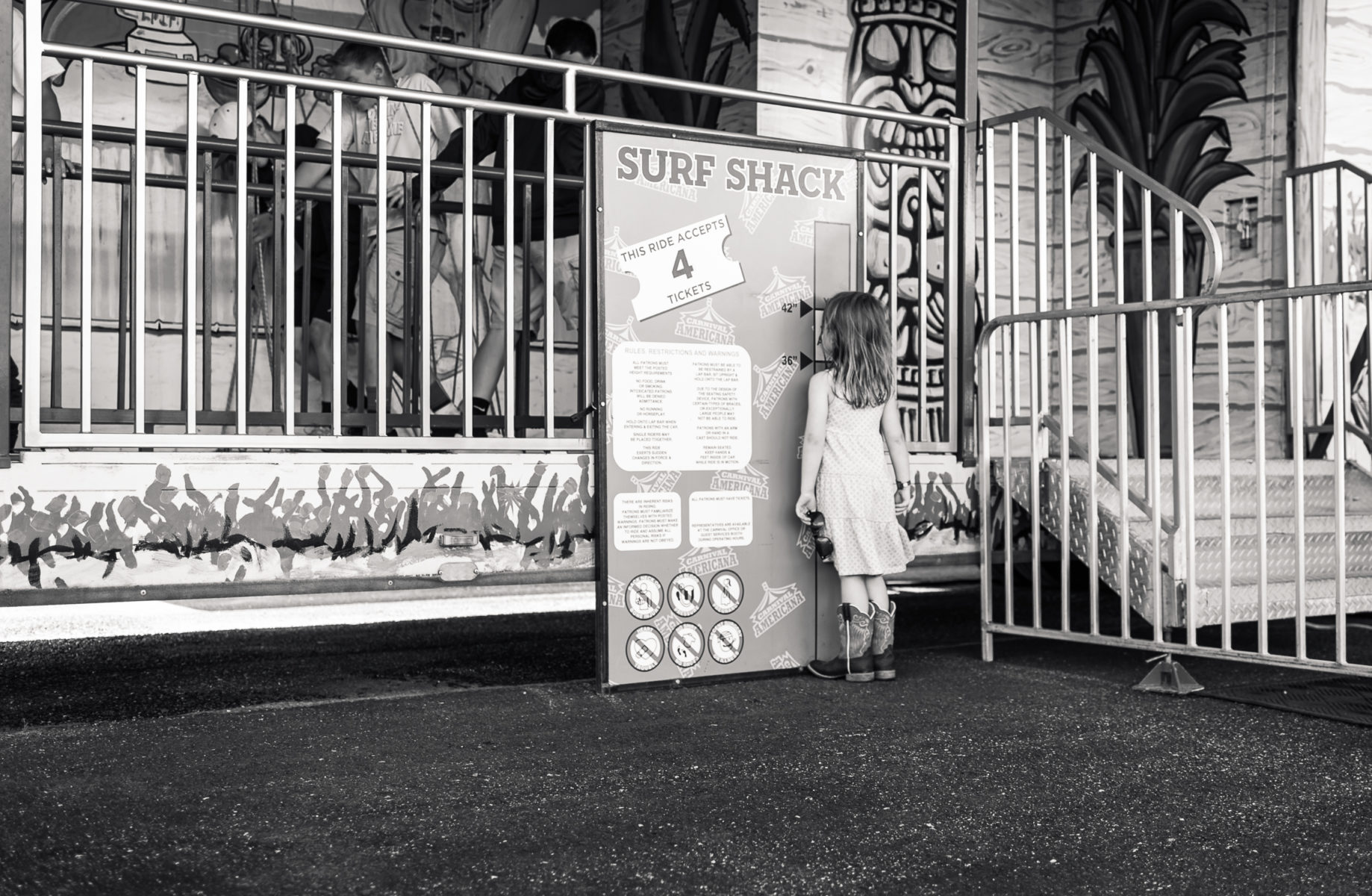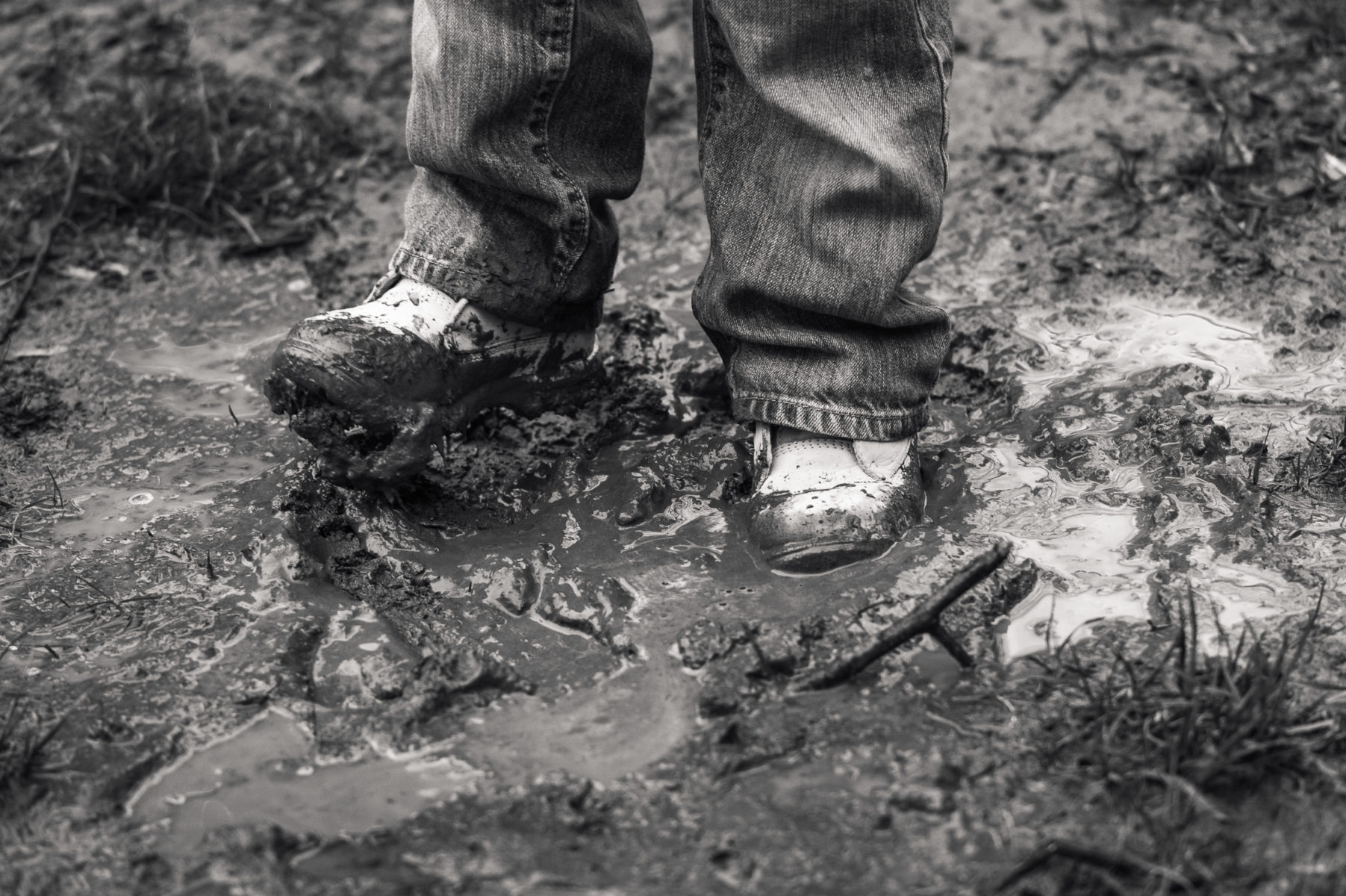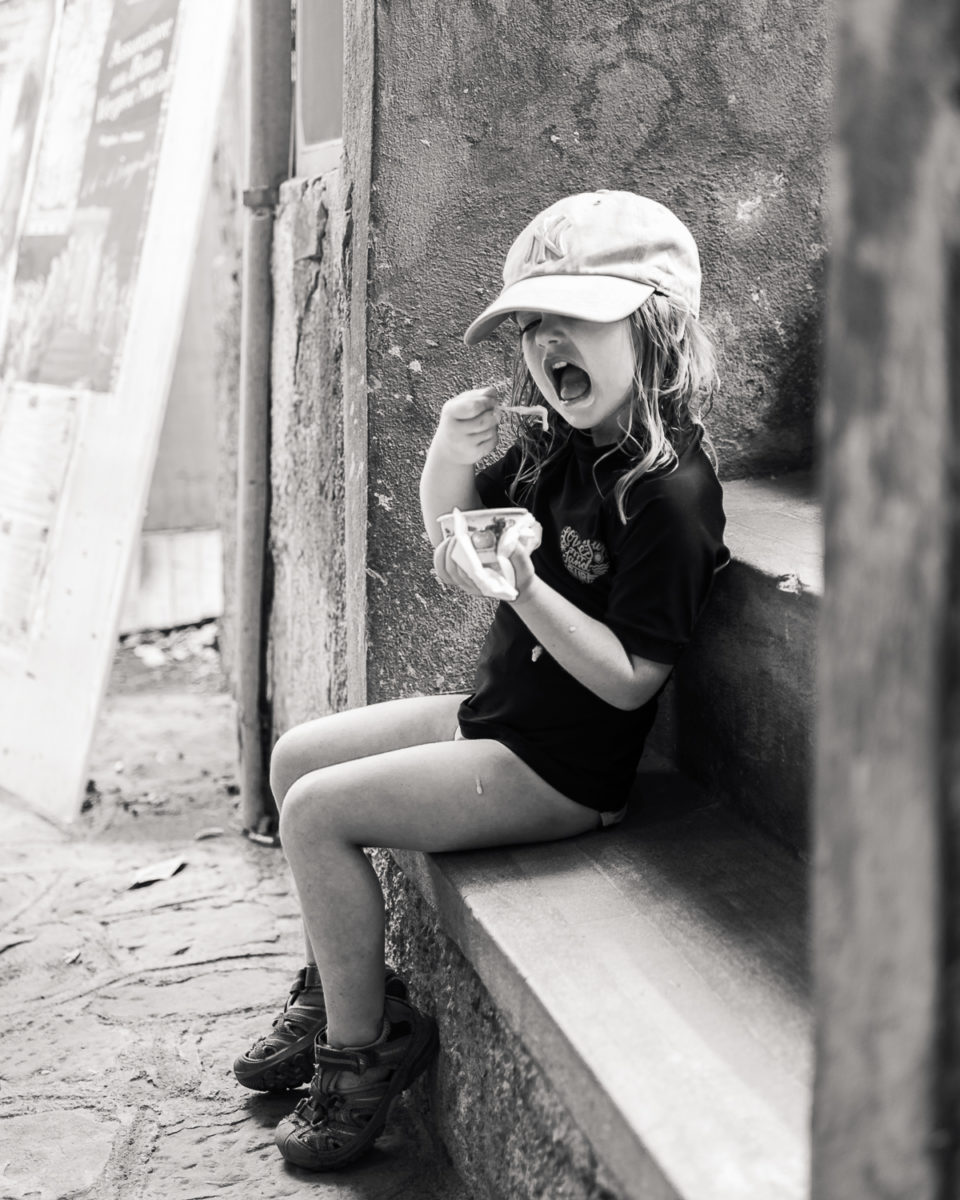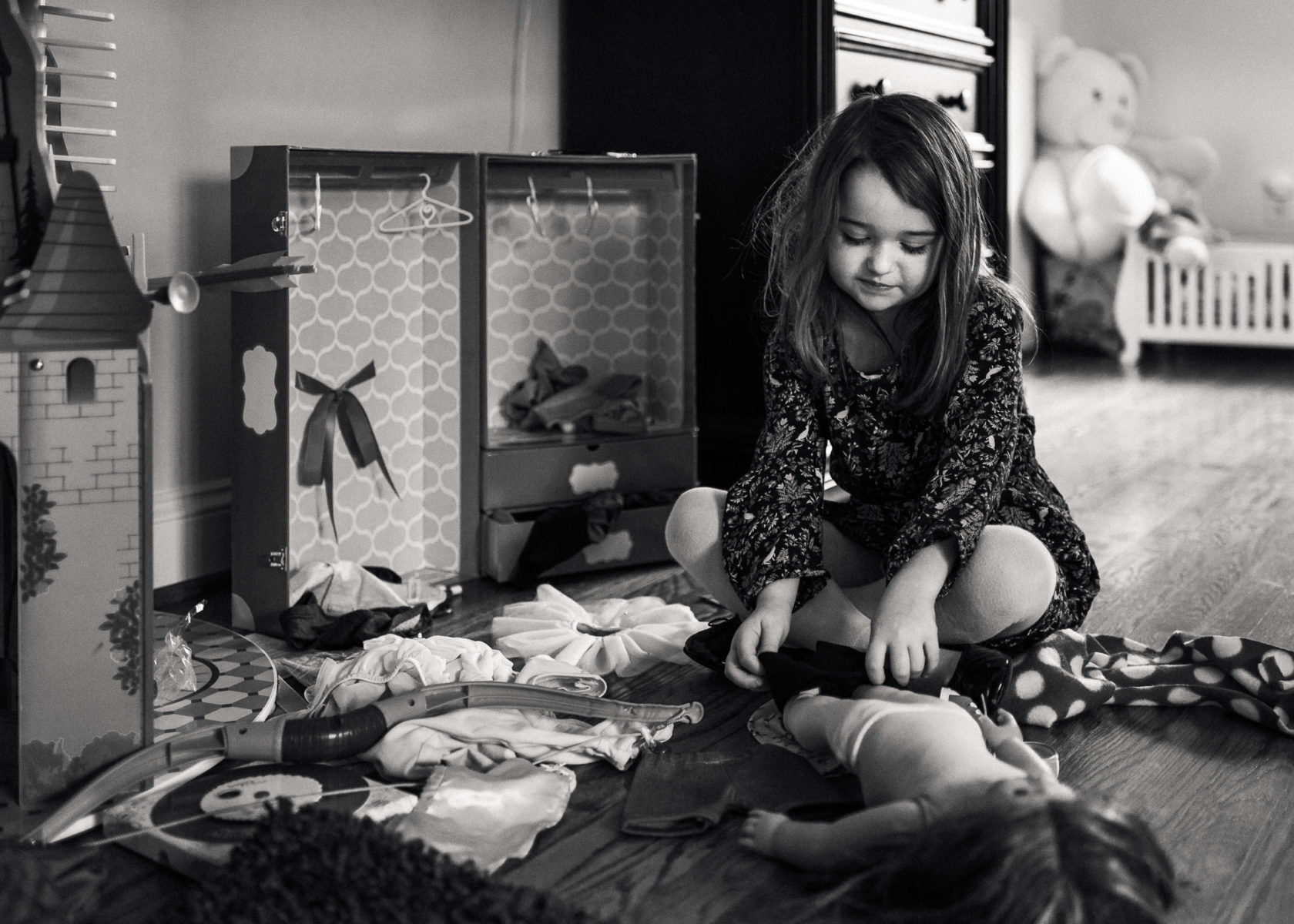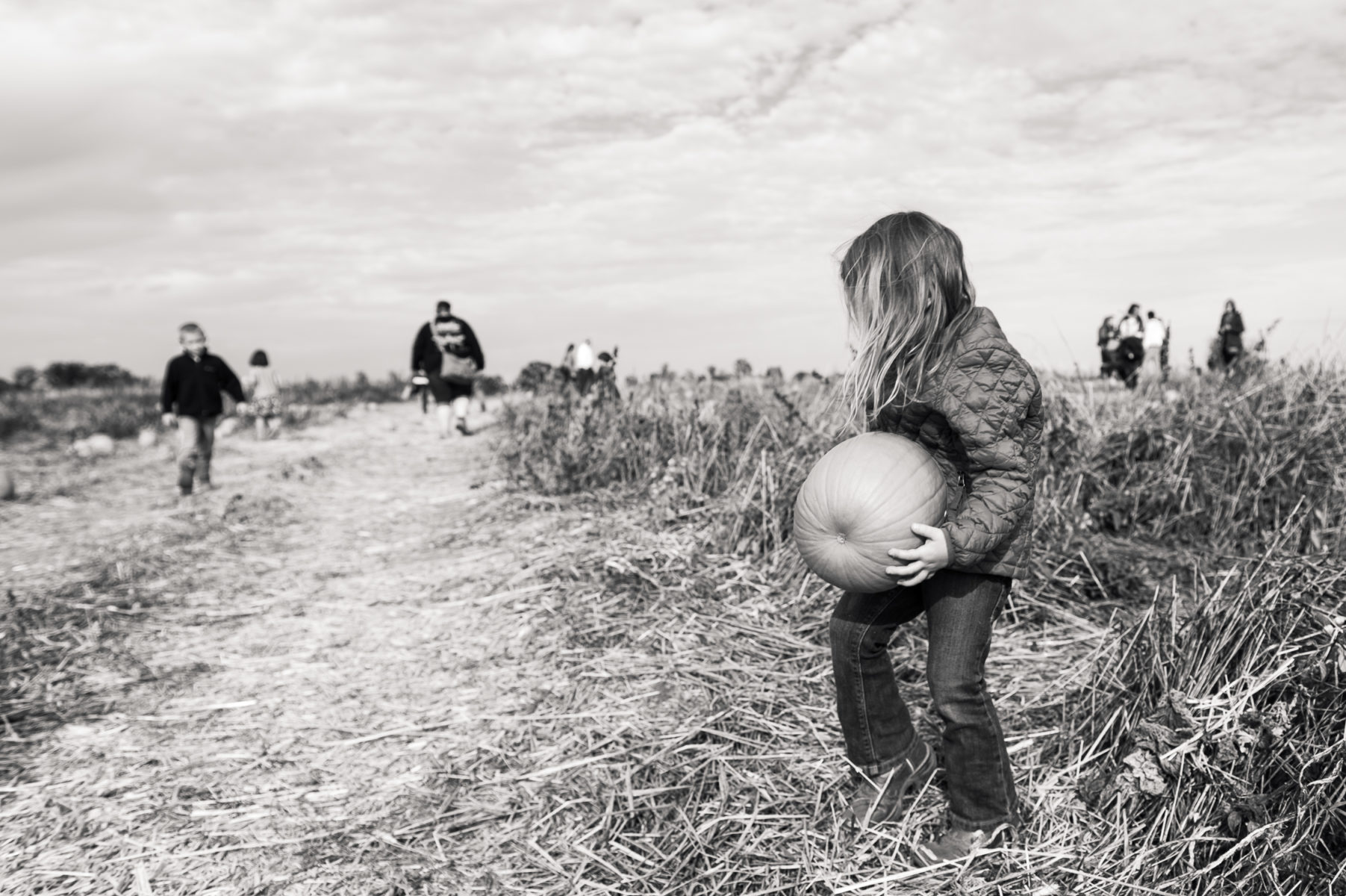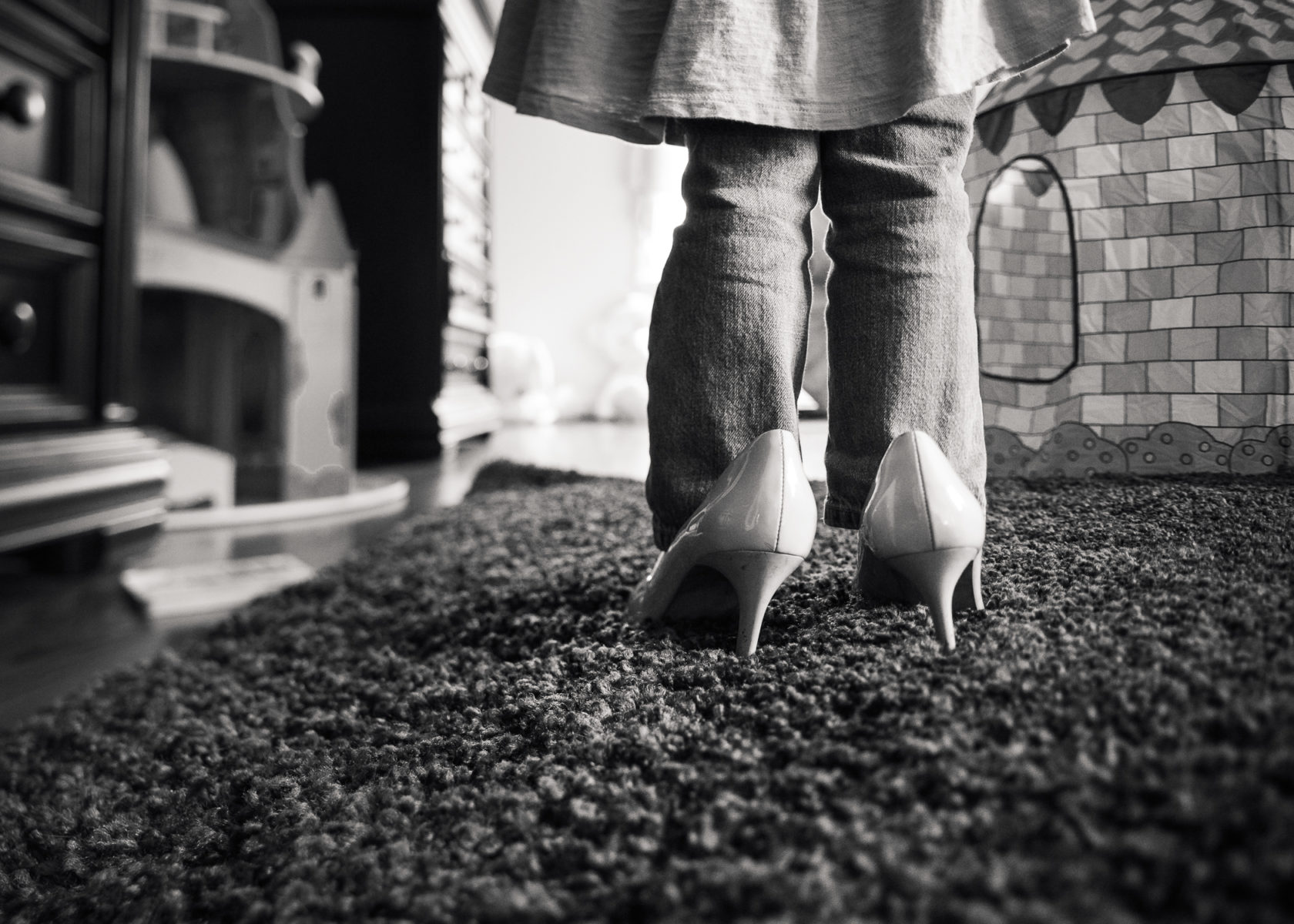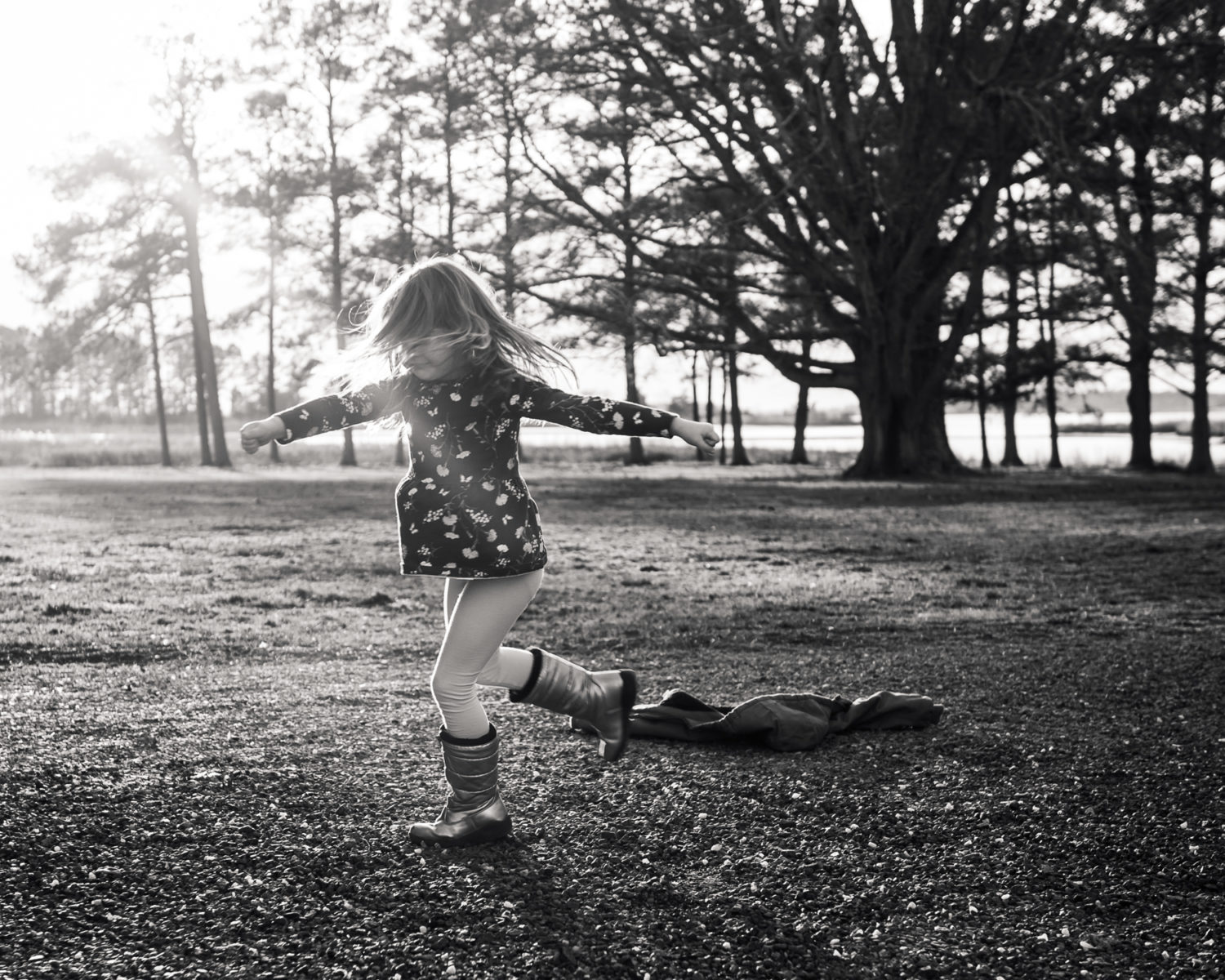In Like a Girl, I’m photographing my daughter’s childhood journey, examining her strength and spirit in that period before she internalizes the gender norms imposed by privileged white suburban America. I am telling her story in an editorial way—these moments are real—but my perspective is an integral part of the project. Through her, I recall a faded memory of me: the person I was before I worried about what a good girl should do, what society expected of me; the person who put her own worms on a hook and climbed as high as she could. I started shooting Like a Girl when she was two years old, and I intend to shoot it for many years.
I am a black and white photographer, and I shoot in the mid-century style of straight photography. Black and white removes the distractions of an image and strips away any gender connotations of color, but it also is unforgiving: without the seduction and emotional impact of colors, I’m only left with the image’s composition and luminosity. The image’s success depends on range of tones—the interplay of black, white, and (most importantly) gray within the frame—and the use of form, lines, and subject placement. Through this use of monochrome, the inclusion of meaningful secondary elements, and thoughtful consideration of crop and frame dimensions, I create images emphasizing the conflict and ambiguity about my daughter’s passage through girlhood, as well as the pride I feel in watching her grow.
